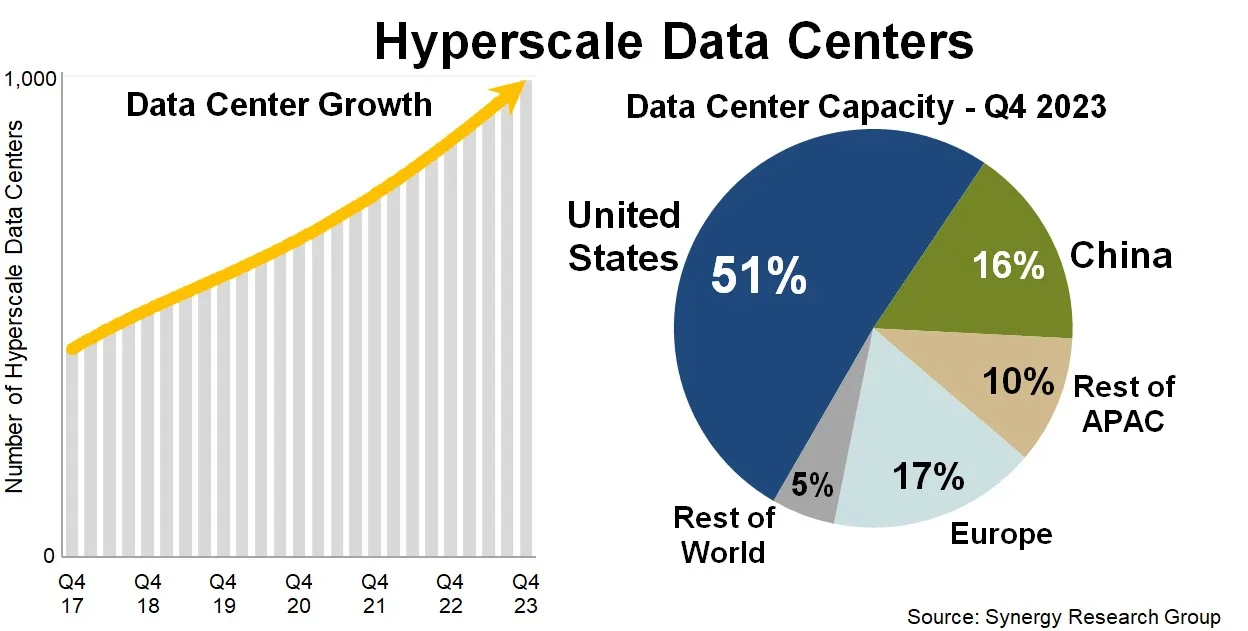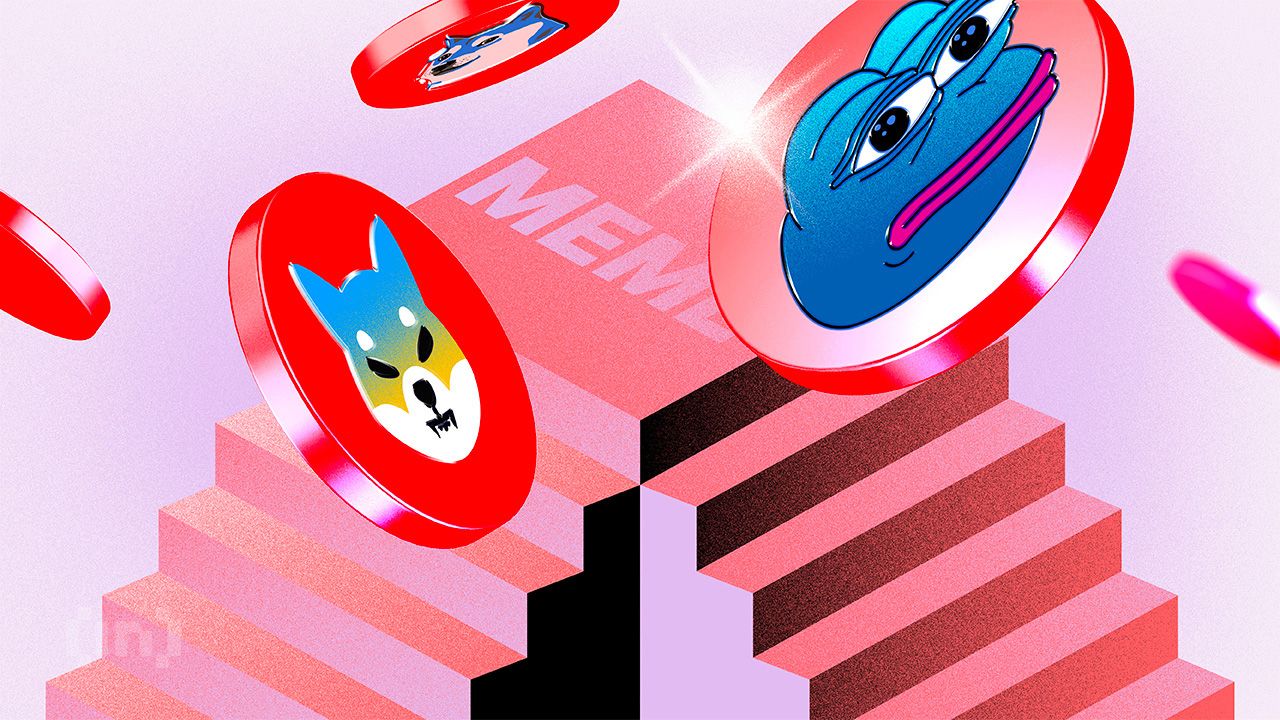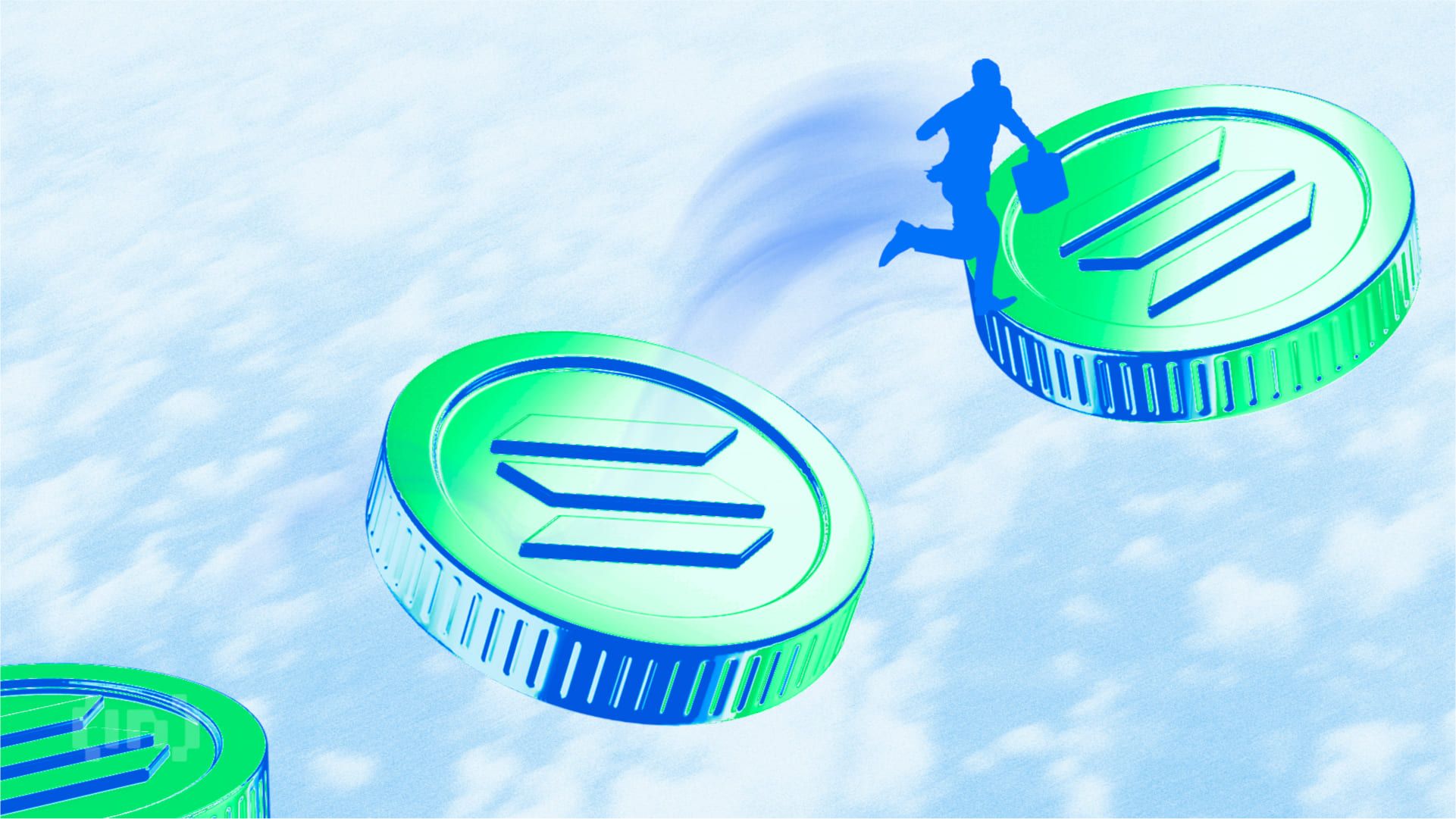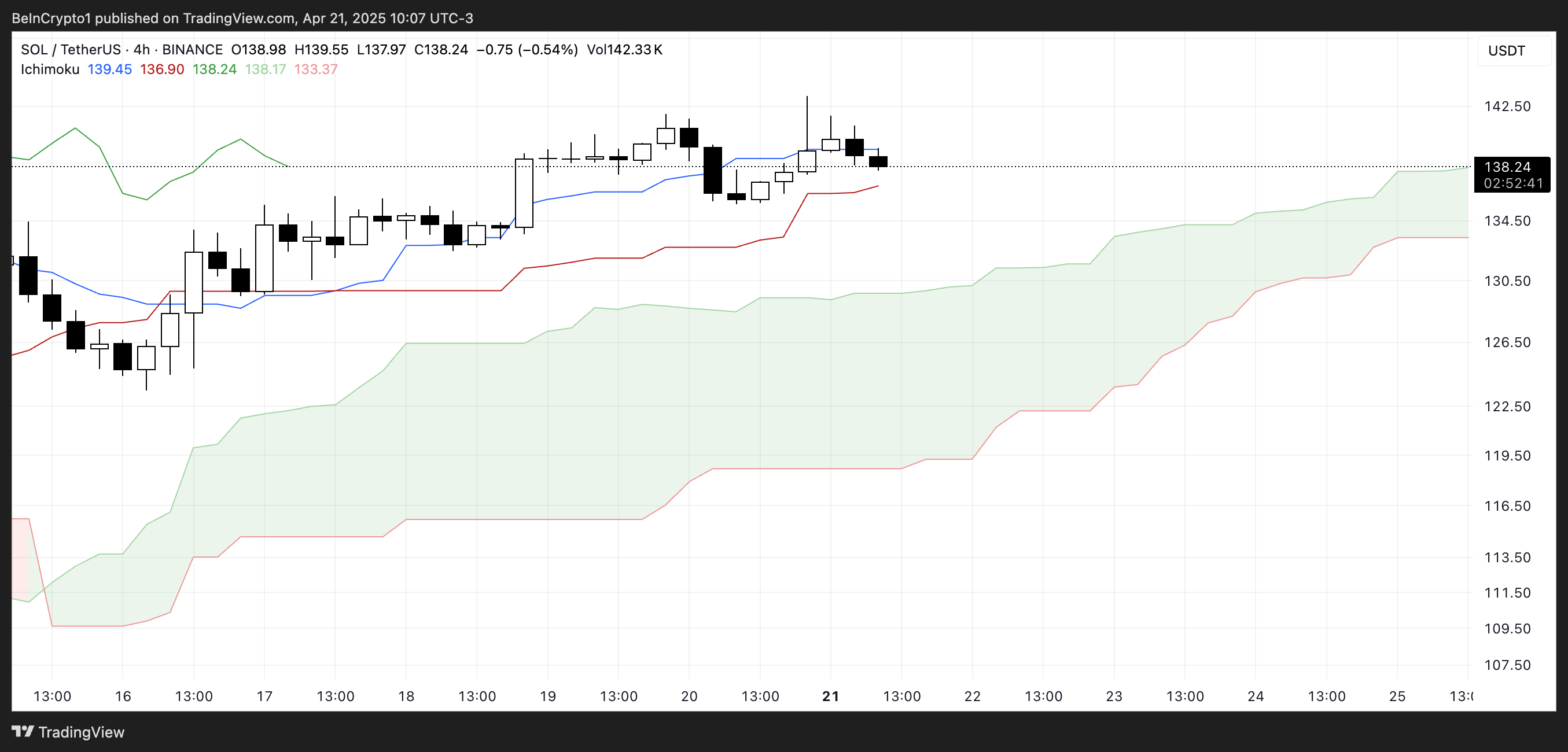Market
This Is How DePIN Can Solve AI’s Global Energy Crisis

The rise of artificial intelligence (AI) and generative AI technologies has been meteoric in the past two years. For some tech-savvy people, every morning begins with the help of AI, from the smart alarm that tracks their sleep cycle to the news app that curates articles based on their interests.
But behind these seamless conveniences lies a hidden reality – these technologies are part of a growing energy crisis. As AI technologies like generative AI advance, they are not just transforming our lives; they’re demanding a huge share of the world’s electricity.
Impact of AI on Energy Infrastructures
The challenge is stark. As one of the most energy-intensive modern IT endeavors, AI systems require considerable carbon emissions and electricity. Indeed, the world might not be ready for their demands.
In 2023, the world became acquainted with the implications of generative AI, and by 2024, its utilization in various sectors magnified. Hence, data centers that power these AI models are becoming massive consumers of electricity.
Indeed, Forbes noted that GPT-4 required over 50 gigawatt-hours to train—equivalent to 0.02% of California’s annual electricity production. Moreover, it requires 50 times more energy than its predecessor, GPT-3.
The statistics are staggering. Globally, data centers and their transmission networks now contribute to 3% of global energy consumption, emitting as much carbon dioxide as Brazil.
Moreover, the escalating energy requirements show no signs of abating. According to an International Energy Agency (IEA) projection, global electricity demand will surge from 460 terawatt-hours (TWh) in 2022 to 1000 TWh by 2026.
Read more: How To Build Your Personal AI Chatbot Using the ChatGPT API

In the United States alone, the power demand from data centers is expected to increase from 200 TWh in 2022 to 260 TWh by 2026, marking a 6% share of the country’s total power usage. Projections suggest this demand will double by 2030.
Amid this backdrop, Ayush Ranjan, CEO of Huddle01, highlighted in an interview with BeInCrypto the urgent need for solutions like DePIN (Decentralized Physical Infrastructure Network).
“AI data centers require a substantial amount of electricity for computation and cooling. If AI applications continue to grow at the current rate, we will see a significant strain on both local and global energy grids that will prove unsustainable. This burden will continue to increase as AI systems get more and more complex with time. This will again lead to higher emissions and grid instability,” Ranjan explained.
The geographic clustering of data centers compounds the challenges. For instance, Northern Virginia hosts the largest hub of data centers globally, consuming electricity equivalent to that of 800,000 homes. This concentration creates dangerous fluctuations in power demand, posing severe risks to energy infrastructures.
How DePIN Solves the Challenges
In response, DePIN offers a promising solution by leveraging underutilized hardware resources to distribute computational tasks more efficiently. By decentralizing energy consumption and incentivizing the use of edge computing, DePIN networks could significantly alleviate the energy burden imposed by AI, offering a pathway to more sustainable and democratized access to AI resources.
Ranjan further elucidated that DePINs distribute energy consumption and workload, easing the burden on any single point. Instead of relying on huge centralized data centers, DePIN deploys multiple nodes—often utilizing underused infrastructure to offload computations closer to end-users.
“This reduces the workload on servers and spreads energy consumption more evenly across regions, easing the burden on energy grids,” Ranjan told BeInCrypto.
Currently, 84% of the data centers are concentrated around the United States, Europe, and China, making data transfers less energy efficient. However, edge computing, integral to DePIN, minimizes long-distance, energy-intensive data transfers typical of centralized data centers.
“Splitting the energy consumption across multiple devices and regions, reducing the load on data centers and energy grids by leveraging existing devices or resources to build the network will prove critical in solving this issue,” Ranjan affirmed.
Read more: What Is DePIN (Decentralized Physical Infrastructure Networks)?

DePin Projects Addressing AI’s Demands
According to Ranjan, several DePIN projects, like Filecoin Green, Akash Network, Render, and Grass, focus on addressing AI’s energy demands.
Notably, the Daylight Energy project, backed by prominent venture capitalist firm Andreessen Horowitz (a16z), aims to transform energy grid operations through distributed energy resources (DERs). This initiative enhances grid responsiveness and facilitates sustainable energy practices by leveraging real-time data from DERs such as solar panels and smart batteries.
Moreover, on September 10, Daylight Energy announced a partnership with DIMO Network to enable electric vehicles (EVs) to support power grids. This collaboration utilizes DIMO’s EV application programming interfaces (APIs) to integrate EVs into the energy management ecosystem, thereby facilitating clean energy usage and real-time energy management for all EV owners.
DePIN networks also solve other challenges of centralized infrastructure, such as frequent outages. For instance, a recent IT outage involving Microsoft and CrowdStrike disrupted major services worldwide. However, DePIN networks are less susceptible to such outages because they do not have a single point of failure.
Currently, the total market capitalization of DePIN projects stands above $20.5 billion. Additionally, the total number of DePIN devices has crossed 18 million. However, DePIN still faces scalability challenges as the mainstream adoption of these networks requires high computational power.
“Many DePINs rely on a mix of devices, from low-powered edge devices to small-scale data centers. Scaling the network and coordinating the deployed resources to match the computational power of a centralized data center remains a formidable industry challenge,” Ranjan noted.
Read more: Top 10 Web3 Projects That Are Revolutionizing the Industry

However, while the idea of DePIN rescuing the world from a global energy crisis remains nascent, further innovation and adoption are essential. Ranjan believes that token incentives can help bring more adoption.
“Because of hardware limitations of edge devices to handle AI workload, wide adoption is crucial for any DePIN to scale and see a mainstream use case. Token incentives help drive intent to use and participate,” Ranjan concluded.
Disclaimer
Following the Trust Project guidelines, this feature article presents opinions and perspectives from industry experts or individuals. BeInCrypto is dedicated to transparent reporting, but the views expressed in this article do not necessarily reflect those of BeInCrypto or its staff. Readers should verify information independently and consult with a professional before making decisions based on this content. Please note that our Terms and Conditions, Privacy Policy, and Disclaimers have been updated.
Market
Report Alleges Massive Meme Coin Sniping on Pump.fun

According to a new report from Pine Analytics, token deployers on Pump.fun systematically funded sniper wallets to buy their own meme coins. This impacted over 15,000 token launches on the platform.
These sniper wallets operated primarily during US trading hours, executing standardized, profitable strategies. Unrelated bot activity obscures their behavior, making it extremely difficult to isolate these wallets—and they can readily adapt to new countermeasures.
Snipers Roam Free on Pump.fun Meme Coins
Pump.fun has remained one of the most popular meme coin launchpads on Solana despite persistent controversies and other criticism.
However, Pine Analytics’ new report has uncovered a new controversy, discovering systematic market manipulation on the platform. These snipes include as much as 1.75% of all launch activity on Pump.fun.
“Our analysis reveals that this tactic is not rare or fringe — over the past month alone, more than 15,000 SOL in realized profit was extracted through this method, across 15,000+ launches involving 4,600+ sniper wallets and 10,400+ deployers. These wallets demonstrate unusually high success rates (87% of snipes were profitable), clean exits, and structured operational patterns,” it claimed.
Solana meme coin deployers on Pump.fun follow a consistent pattern. They fund one or more sniper wallets and grant them advance notice of upcoming token launches.
Those wallets purchase tokens in the very first block and then liquidate almost immediately—85% within five minutes and 90% in just one or two swap events.

Pump.fun meme coin developers exploit this tactic to create the appearance of immediate demand for their tokens. Retail investors, unaware of the prior sell‑off, often purchase these tokens after the snipe, giving developers an unfair advantage. This constitutes market manipulation and erodes trust in the platform.
Pine Analytics had to carefully calibrate its methods to identify genuine snipers. Apparently, 50% of meme coin launches on Pump.fun involve sniping, but most of this is probably bots using the “spray and pray” method.
However, by filtering out snipers with no direct links to developer wallets, the firm missed projects that covered their tracks through proxies and burners.
In other words, the meme coin community does not have adequate defenses against systematic abuse on Pump.fun. There are a few possible ways that the platform could flag repeat offenders and sketchy projects, but adaptive countermeasures could defeat them. This problem demands persistent and proactive action.
Unfortunately, it may be difficult to enact such policies. Meme coin sniping is so systematic that Pump.fun could only fight it with real commitment.
Analysts think that building an on-chain culture that rewards transparency over extraction is the best long-term solution. A shift like that would be truly seismic, and the meme coin sector might not survive it.
Disclaimer
In adherence to the Trust Project guidelines, BeInCrypto is committed to unbiased, transparent reporting. This news article aims to provide accurate, timely information. However, readers are advised to verify facts independently and consult with a professional before making any decisions based on this content. Please note that our Terms and Conditions, Privacy Policy, and Disclaimers have been updated.
Market
Solana Leads Blockchain Metrics as SOL Momentum Builds

Solana (SOL) continues to show strength across multiple fronts, maintaining a bullish structure on its Ichimoku Cloud chart while gaining momentum in key market metrics. The BBTrend indicator has turned higher again, signaling renewed buying pressure after a brief cooldown.
On-chain activity remains strong, with Solana leading all blockchains in DEX volume and dominating fee generation thanks to the explosive growth of meme coins and launchpad activity. With SOL now trading above a key resistance level, the path is open for further upside—though a loss of momentum could still trigger a retest of lower supports.
Solana Maintains Bullish Structure, but Momentum Faces Key Test
On Solana’s Ichimoku Cloud chart, the price is currently above the Kijun-sen (red base line) but has dipped below the Tenkan-sen (blue conversion line), signaling weakening short-term momentum.
The flattening Tenkan-sen and price behavior suggest possible consolidation or the early stages of a pullback. Still, with the price holding above the Kijun-sen, medium-term support remains intact.

The overall Ichimoku structure remains bullish, with a thick, rising cloud and leading span A well above span B—indicating strong underlying support.
If Solana finds support at the Kijun-sen and climbs back above the Tenkan-sen, the uptrend could regain strength; otherwise, a test of the cloud’s upper boundary may follow.

Meanwhile, Solana’s BBTrend is currently at 6, extending nearly ten days in positive territory after peaking at 17.5 on April 14. The recent increase from 4.26 to 6 suggests renewed bullish momentum following a brief cooldown.
BBTrend, or Bollinger Band Trend, tracks the strength of price movement based on Bollinger Band expansion.
Positive values like the current one point to an active uptrend, and if the BBTrend continues to rise, it could signal stronger momentum and potential for another upward move.
Solana Dominates DEX Volume and Fee Generation as Meme Coins Drive Ecosystem Growth
Solana has once again claimed the top spot among all chains in DEX volume, recording $15.15 billion over the past seven days. The combined total of Ethereum, BNB, Base, and Arbitrum reached $22.7 billion.

In the last 24 hours alone, Solana saw $1.67 billion in volume, largely fueled by its booming meme coin ecosystem and the ongoing launchpad battle between PumpFun and Raydium. Adding to this good momentum, Solana recently surpassed Ethereum in Staking Market Cap.

When it comes to application fees, Solana’s momentum is just as clear. Four of the top ten fee-generating apps over the past week—PumpFun, Jupiter, Jito, and Meteora—are Solana-focused.
Pump leads the pack with nearly $18 million in fees alone.
Solana Breaks Key Resistance as Uptrend Targets Higher Levels, but Risks Remain
Solana has finally broken above its key resistance at $136, flipping it into a new support level that was successfully tested just yesterday.
Its EMA lines remain aligned in a bullish setup, suggesting the uptrend is still intact.
If this momentum continues, SOL price could aim for the next resistance zones at $147 and $152—levels that, if breached, open the door to a potential move toward $179.

The current structure favors buyers, with higher lows and strong support reinforcing the trend.
However, if momentum fades, a retest of the $136 support is likely.
A breakdown below that level could shift sentiment, exposing Solana to deeper pullbacks toward $124 and even $112.
Disclaimer
In line with the Trust Project guidelines, this price analysis article is for informational purposes only and should not be considered financial or investment advice. BeInCrypto is committed to accurate, unbiased reporting, but market conditions are subject to change without notice. Always conduct your own research and consult with a professional before making any financial decisions. Please note that our Terms and Conditions, Privacy Policy, and Disclaimers have been updated.
Market
Crypto Firms Donated $85 million in Trump’s Inauguration

According to a new report, 15 firms and individuals from the crypto industry donated more than $100,000 to President Trump’s Inauguration, totaling over $85 million.
Almost all of these companies apparently received direct or indirect benefits from Trump’s administration. This includes dropped legal proceedings, lucrative business partnerships, participation in Trump’s Crypto Summit, and more.
Crypto Industry Went All-In on Trump’s Inauguration
Since promising to bring friendlier regulations on the campaign trail, Donald Trump attracted a reputation as the Crypto President.
Trump’s Inauguration festivities included a “Crypto Ball,” and several prominent firms made donations for these events. Today, a report has compiled all crypto-related contributions of over $100,000, revealing some interesting facts.

Since taking office, President Trump and his family have been allegedly involved in prominent crypto controversies, and these donations may be linked to several of them.
For example, eight of the donors, Coinbase, Crypto.com, Uniswap, Yuga Labs, Kraken, Ripple, Robinhood, and Consensys, had SEC investigations or lawsuits against them closed since Trump’s term began.
The commission might have dropped its probe against these companies anyway due to its changing stance on crypto enforcement. However, being in the President’s good books likely helped the process.
Further Alleged Benefits for Donors
In other words, nearly half the firms that made donations to Trump’s Inauguration have seen their legal problems cleared up quickly. This isn’t the only regulation-related benefit they allegedly received.
Circle, for example, recently made an IPO after openly stating that Trump’s Presidency made it possible. Galaxy Digital received SEC approval for a major reorganization, a key step for a NASDAQ listing.
Other donors, such as Crypto.com and ONDO, got more direct financial partnerships with businesses associated with the Trump family.
Previously, Ripple’s CEO, Brad Garlinghouse, anticipated a crypto bull market under Trump. Also, XRP, Solana, and Cardano were all unexpectedly included in the US Crypto Reserve announcement.
All three of these companies made major donations to Trump’s Inauguration.
It seems that most of the firms involved got at least some sort of noticeable benefit from these donations. Donors like Multicoin and Paradigm received invitations to Trump’s Crypto Summit, while much more prominent groups like the Ethereum Foundation got snubbed.
Meanwhile, various industry KOLs and community members have already alleged major corruption in Trump’s crypto connections.
While some allegations might lack substantial proof, the crypto space has changed dramatically under the new administration, for both good and bad.
Disclaimer
In adherence to the Trust Project guidelines, BeInCrypto is committed to unbiased, transparent reporting. This news article aims to provide accurate, timely information. However, readers are advised to verify facts independently and consult with a professional before making any decisions based on this content. Please note that our Terms and Conditions, Privacy Policy, and Disclaimers have been updated.
























